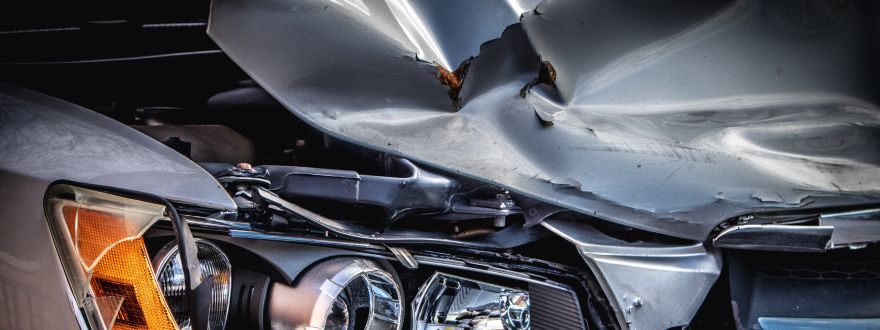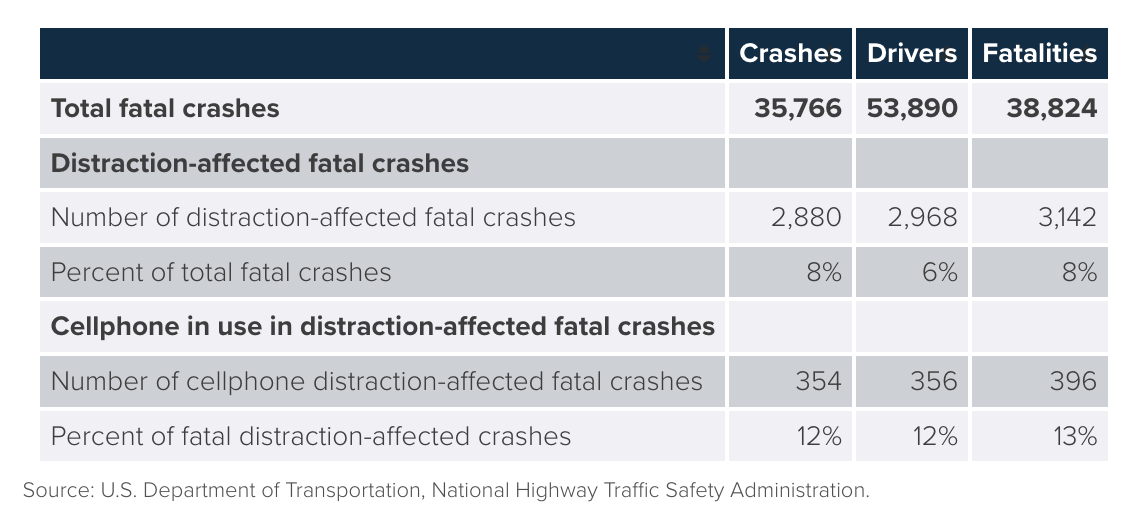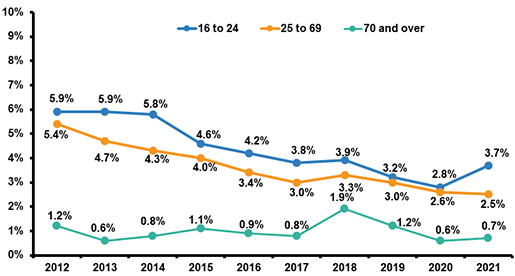
Distracted driving remains a major roadway safety threat, involving behaviors such as talking or texting on mobile devices, eating, conversing with passengers, and other diversions while operating a vehicle.
The use of mobile phones and other electronic devices while driving has emerged as one of the leading causes of distracted driving related crashes. However, research shows that many types of distracted driving may lead to crashes and near crashes.
How big is the distracted driving problem?
According to National Highway Safety Administration (NHTSA), there were 3,142 distracted driving fatal crashes in 2020. Economic losses from distracted driving totaled $98.2 billion in 2019. Overall, eight percent of fatal crashes, 14 percent of injury crashes, and 13 percent of all police-reported motor vehicle traffic crashes in 2020 were affected by distraction.
Cellphone use is one of the distractions cited by NHTSA as a factor in fatal crashes involved in 11 percent of all distraction-affected fatal crashes, totaling 354 U.S. deaths in 2020.
Drowsiness as a distraction caused 91,000 police-reported crashes in 2020, leading to an estimated 663 deaths nationwide.
Key studies on distracted driving
- The AAA 2021 Traffic Safety Culture Index found that an overwhelming number of drivers (92 percent) believe texting/emailing and reading (93 percent) on a hand-held cell phone while driving is “very or extremely” dangerous. However, over a quarter of drivers (26 percent) reported having sent a text/email while driving in the 30 days before the survey.
- The 2021 Travelers Risk Index Distracted Driving poll found that 77 percent of drivers surveyed talk on or use a cellphone through hands-free technology, 74 percent look at map directions on a cellphone, 56 percent read a text message or email, 27 percent update or check social media, and 19 percent shop online.
- The 2022 Cambridge Mobile Telematics U.S. Distracted Driving Report found that the COVID-19 pandemic significantly increased distracted driving, with drivers 30 percent more distracted in February 2022 than in February 2020, despite the fact that the spread of Delta and Omicron variants decreased driving activity. Additionally, evening and late-night distracted driving increased during COVID-19 lockdowns and has remained higher than pre-pandemic levels.
State and Federal initiatives to combat distracted driving
- In 2001 New York passed the first law banning hand-held cellphone use while driving.
- In 2011 the National Transportation Safety Board (NTSB) recommended that all states prohibit drivers from using cellphones, the first federal agency to call for a complete ban on telephone conversations from behind the wheel. Although the NTSB has no enforcement authority, as the federal government’s leading advocate for safety, its recommendations are influential in Congress and the White House.
- According to the Insurance Institute for Highway Safety, as of December 2020, talking on a hand-held cellphone while driving is banned in 24 states and the District of Columbia. Almost all the laws have "primary enforcement" provisions, meaning a motorist may be ticketed for using a hand-held cellphone while driving without any other traffic offense taking place. Text messaging is banned while driving in 48 states and the District of Columbia.
Crash Avoidance Technology
Crash avoidance technology provides promise for decreasing crash risks related to distractions of any kind. These tools can provide warnings to redirect a distracted, inattentive, or sleepy driver’s attention to the roadway if there is a potential for a collision. Certain systems attempt to prevent the collision if a driver fails to respond quickly or does not respond at all to a potential hazard.
Charts and Graphs
Fatal Crashes Involving Distracted Drivers, 2020

Source: U.S. Department of Transportation, National Highway Traffic Safety Administration.
Driver Hand Held Cellphone Use By Age, 2012-2021

(1) Percent of all drivers using hand held cellphones.
Source: U.S. Department of Transportation, National Highway Traffic Safety Administration.
Thanks to Insurance Information Institute for this informative article. To see the content in its original habitat, click here





